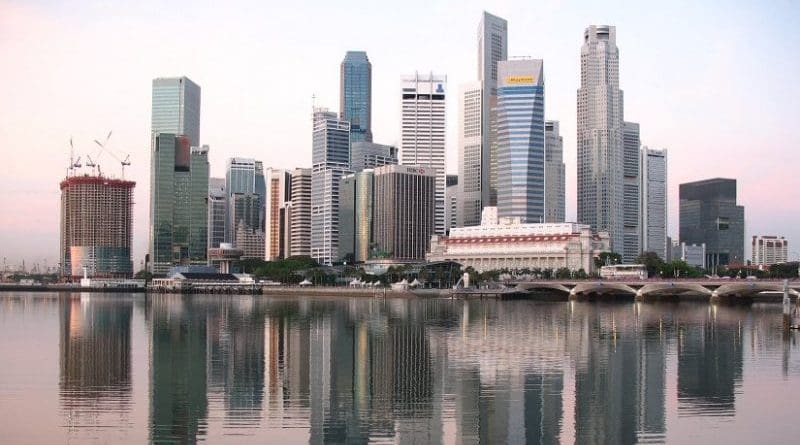Singapore: A Golden Treasure Of ASEAN – Analysis
Inspired by “The theory and requirements of 5 E’s Djawed Sangdel to the global leaders in the world”, it is here to present Singapore to illustrate 5 main pillars of the 5E’s: Esteem, Education, Energy, Entrepreneur, and Economy. For Sangdel a county can’t has the development without the exigency of 5E’s.
Since the independence period from British colonization, Singapore has become stronger and wealthier than any Asia-Pacific region (ranked the second among 43 countries in regards of economic freedom score: 89.4, leading its economy to be the second freest in the 2019 Index). Also, Singapore was the third most globalized economy in the list of 60 world’s largest economies, according to Ernst and Young 2011 Globalization Index).
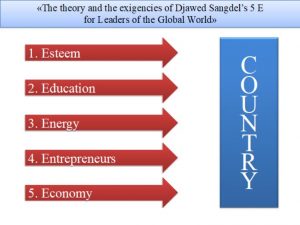
Certainly, the economy of Singapore is sustainable and keeps growing these days. Also, the Singaporean government has dedicatedly invested in its people for decades. However, this “Asian tiger” has only around 700 kilometers, lacking of both arable and natural resources such as fuels, minerals or metals. Moreover, there is only 1.3% of the labor force working in agriculture, which does not contribute to the majority of the GDP. Thus, it is questionable that does Singapore fulfill the conditions and requirements of the 5 E’s in its developmental process?
Esteem
Charlie Munger once said that Singapore had a better accomplishment compared to the United States in the beginning, and the powerful talented person behind this success was definitely Lee Kuan Yew, the Warren Buffett of Singapore.
It is undoubtedly that Lee Kuan Yew possesses a varied range of wonderful characteristics and personalities since he was born. Growing up in a middle-class Chinese family, and then residing in Singapore since the 19th century. Mr. Lee studied law at Cambridge, United Kingdom, and then coming back to Singapore to study economics, English literature, and mathematics at Raffles College. His education was interrupted by the Japanese conquest. He decided to learn Japanese and became a translator for a news agency. His nationalist pride was strong, which he was aware Singapore has to be independent and free from foreign powers.
Lee Kuan Yew – the founding father of Singapore
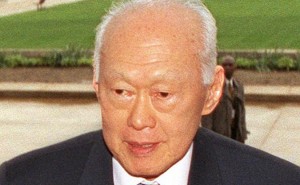
Lee Kwan Yew started his political career as an election agent under a pro-British Progressive Party. Then, he co-founded the People’s Action Party (PAP) aiming of ending British colonial rule and reaching to self-governance for Singapore. After that, he became the first Prime Minister of Singapore when winning 43 of the 51 seats in the legislative assembly on 30th May 1959.
Taking control of the new nation, Lee Kuan Yew understood Singapore had no natural resources and had to rely on Malaysia to support and distribute fresh water to the people. Along with that, Lee saw that it was vital to have a good relationship with Malaysia for Singapore’s survival. Thus, he initiated the proposal to join Malaysia as one of its member states. However, the merger happened shortly (1963-1965) due to mounting disagreements between the Federal Government of Malaysia and the PAP. Even he was anguish at that time, he had a strong belief in himself and his people for Singapore and continuing to develop a nation that he envisioned it to be, “better and stronger” than Malaysia. Then, Singapore became a sovereign, democratic and independent nation.
Becoming independent from Britain and Malaysia, Lee formed a great team and kept them together as founding fathers of Singapore – Goh Keng Swee, Lim Kim San, S Rajaratnam, Toh Chin Chye and Devan Nair faced with the survival of the nation and Lee never gave up on his vision and his belief. Lee Kuan Yew was also trying to spread his clear vision for Singapore and shared it to his people in several public speeches.
Moreover, Lee understood the vulnerability of small nations such as Singapore, and believed that “a small country must seek a maximum number of friends, while maintaining the freedom to be itself as a sovereign and independent nation”. He desired being global, learning languages (English, Mandarin and Malay) as a multi-lingual orator, giving him the ability to reach the widest audience of the multi-racial, multi-cultural states. He managed to create close-knitted collaboration and be global influence in different races, states and faiths. Thus, Mr. Lee traveled around 304 official trips to 83 countries between 1959 and 2012. He was striving for Singapore’s future in the international arena.
Certainly, Lee Kuan Yew possessed a strong self-esteem to manage his nation effectively and innovatively through dark times and brighten times to have a success of Singapore these days. From his brilliant style of leadership and quick wit, how did he aspire his esteem to his people? How had he managed to bring the prosperity of Singapore?
Succession planning to Singapore
After the British left and Singapore attained self-government, the country faced a myriad of problems such as poverty, poor public health, a severe housing shortage, an inactive economy and an exploding population. How did Lee Kuan Yew govern and solve these overwhelming problems?
First, Singapore officially applied to join the United Nations on 3rd September 1965, after separation from the Federation of Malaysia. And then received acceptance, becoming the 11th UN member state on 21st September in the same year. Lee Kuan Yew and his team realized United Nations has made a safer place for countries like Singapore because it “restrains middle powers from invading small states”. This action has allowed not only to raise the country’s profile but also achieve a high recognition in the international community. Also, it was ‘natural’ for Singapore to adhere the policy of “resolving differences between nations through peaceful negotiations, not by violent means”, proved by holding several global conferences and committees.
In addition, to compete with global giants, Lee needed to provide Singapore people with its housing and employment opportunities to bring economic stability. Thus, Lee and his colleagues established key initiatives and implemented several important policies that tackled every aspect of Singapore society from economy to housing, healthcare and the environment. For this purpose, he established the Housing Development Board and Economic Development Board. The Government gave public housing as its top priority, transforming inner city slums into carefully planned mixed townships sold at low cost and provided superior living conditions for its citizens. Also, to encourage home ownership, Singaporeans were allowed to use their Central Provident Fund savings to pay for these apartments.
Furthermore, the Government installed a strict quota system in public housing to ensure that ethnic groups did not create their own monolithic areas. This action preserved racial harmony and disruption in religious. Enacting the Prevention of Corruption Act, the Government implemented a comprehensive anti-corruption framework that manages laws, enforcement, public service and public outreach. Any unexplained wealth unbalance to known sources of income would be investigated to the Government. During against corruption, Lee and his PAP colleagues usually wore white shirts and white trousers, symbolizing their determination to keep the Government clean and incorruptible. The anti-corruption agency, the Corrupt Practices Investigation Bureau (CPIB), is well-resourced and independent. Its purpose is to investigate anybody from the highest position level to the lowest one to raise public awareness and form social norms.
Another essential action by Lee Kuan Yew, establishing internal rules; for example, banning chewing gum since 1992. There was a report showed that train cabin doors could not close in a proper way because the passengers stuck gums on the doors causing malfunction. Therefore, he and his team were concerned this negative habit was a noticeable enemy of progress on Singapore’s success. Even it was rumored as a nanny state, Mr. Lee said Singaporeans are better behaved and live in a more satisfied place than 20 years ago. He once made a joke, if one cannot think because one cannot chew, try a banana.
There was an aggressive method of avoiding rapid population growth and threaten economic progress, Minister Lee designed the Stop at Two Family Planning Campaign. It was urging families that already had two children to undergo sterilization. It worked effectively during that time. Until now, Singaporeans are simply not reproducing, with a fertility rate of 1.29 and mostly Singapore population growth depends on immigration. The misguided family planning policies have led to a low birthrate even the Government currently encourage married women have three or four children.
Although Lee Kuan Yew passed away at the age of 91, his contributions, strategies and determination with his colleagues respectfully transformed a small port into global trading hub as these days, remarkably receiving hundreds of admirations from world leaders. Lee Hsien Loong, his son, replacing his position to develop and manage as the third President of Singapore, whether he will make great as his father and maintaining its success in a long-lasting sustainable period?
Lee Hsien Loong – continuing stable success and development
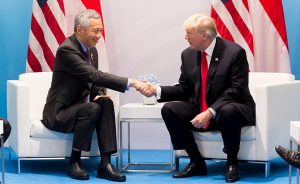
Son of Lee Kuan Yew, Lee Hsien Loong, became the third Prime Minister of Singapore. Growing up with the admiration of his father, Lee Hsien Loong passionately follows the instructions and leans in politics, economics in the early ages as Deputy Prime Minister (1991-2004), Minister of Finance, and Minister of Trade & Industry.
This man has been a shadow of the political and intellectual giant, his father, Lee Kuan Yew since he becomes Prime Minister of Singapore. While senior Lee usually tries to implement what he promises in his speech during his term, junior Lee tends to use too many facts and figures to the audiences, which sometimes made them get lost, and did not do what he said.
Moreover, junior Lee is struggling with his inner circle – core colleagues inside the government. His general managers are quite weak to assist him with serious problems and lack of will to tackle the solutions. Thus, Lee Hsien Loong probably needs more talented people from private sectors with hands-on experience to work with him.
Junior Lee also seems to be a soft leader and rarely makes hard decisions. He was working in his first five years as Prime Minister with invisible presence, due to the dependence of his team of ministers. However, after losing Aljunied Group Representation Constituency (Aljunied GRC) and receiving the lowest majority votes in any election, he has become more realized to be in action. For example, he said the locals committed more crimes than foreigners when the crime rate rose up, which made the locals scared and be careful with current situations.
In addition, senior Lee usually made a trip to the U.S once a year to have a close relationship unlike his son who only visited the U.S during President Obama’s tenure. Compared to his father, Lee Hsien Loong does not prefer interacting with international arena but being a domestic position during his 10-year tenure.
Some people has judged Lee Hsien Loong as someone who climbs the politic ladder through his father’s influence. However, they could not know junior Lee wants to prove himself with greater effort to govern and develop Singapore more than what his father did in the past. Certainly, what Lee Kuan Yew did and Lee Hsien Loong is doing now is a different era with different aspirations. Thus, Singaporeans and foreigners should trust in him and what Lee Hsien Loong runs the government to see what will happen.
And what if junior Lee is a failure when the result of upcoming election – whether he will lose some seats or reclaim back Aljunied GRC? And what if he loses his seats, who will govern Singapore more effectively and successfully than Lee Kuan Yew?
Education
Stepping out from 140-year Singapore’s British colonial past, Lee Kuan Yew and his PAP colleagues decided to have an investment in education first, as “to develop Singapore’s only available natural resource, its people”.
Mr. Lee was willing to inherit useful educational models from his enemy as solid foundations to apply in Singaporean education. For example, primary, secondary and pre-university levels operate in four different languages: English, Chinese, Malay, and Tamil, as well as its focus on science, technology, engineering, and mathematics (STEM). Also, the curriculum for secondary education is modeled on the British O-level and A-level qualifications.
Major education policies since 1959
Being a political independence in 1965, the Singaporean government designed two key goals for education in a new nation: supporting national economic growth and fostering social cohesion in a multi-ethnic, multi-religious population. Besides that, the PAP began classifying curricula, examinations, and teacher qualifications and salaries, as its main target is teachers and students.
In order to support its economic development, the education adopted bilingualism with English (along with the mother tongue of Mandarin, Malay or Tamil), brought a multi-ethnic society’s need for a common language. At the same time, a variety of daily rituals was implemented in schools in order to promote social cohesion and national identity, such as national pledge, awareness of national flag, and singing national anthem.
These two purposes of educational policies have remained over the past six decades. According to 5 E’s, education ranks as the second important element to evaluate the success of the country, this nation has also focused on education to invest on people. Its desired outcomes of education are to “loving Singapore”, and “being enterprising and innovative”.
Key features of Singapore’s education system
One of the most remarkable features is meritocracy, which the PAP has preserved as a founding myth. Its expression is to offer everyone fair educational opportunities and select talent based on individual hard work and merit (individual performance in a series of competitive national examinations).
Secondly, Singaporean education focuses on ability-based streaming, considered as individual differences in ability require unequal curricula. Based on student’s performance in national exams, students would have different courses, levels of complexity in subject curriculum, and different terminal examinations.
Last but not least, the balance between independent schools and the centralization of policymaking of the government established. There are more autonomous schools at secondary level evolving to have freedom in terms of staff deployment and curricula offerings.
Emerging concerns in Singapore education
Successfully, Singapore gradually ranks among top performers in educational attainment measured by the Organization for Economic Cooperation and Developments’ Program International Student Assessment. In addition, its two famous universities are the top 75 in the latest Times Higher Education World University Rankings, as China, Japan, and Germany. However, there still some contradictions in its education system to worry about. The meritocracy has brought several disadvantages as its focus on identifying and nurturing the very best talent and directing it to public service. Moreover, the quick marketization of education (such as promotion of school choice and competition) has created interschool inequalities and social inequalities since the 1980s. Another problematic feature of Singaporean education is the influence of these inequalities on social cohesion.
Energy
Located as a disadvantage position with its neighbor – Malaysia and Indonesia, Singapore barely has natural resources, with not much land area. There is only a tiny fraction of the land area is categorized as agricultural, and production contributes a portion to the overall economy. Locals focus on cultivation intensively, growing vegetables and fruits and poultry for their daily consumptions. Also, the local fishing industry supplies a small portion of the total fresh fish requirement, and a tiny aquaculture industry raising groupers, sea bass, and prawns. Thus, Singapore is a key exporter of both orchids and aquarium fish.
As illustrated below, the energy in Singapore from 2004 to 2013 is classified as population, primary energy, production, import, electricity, and CO2 emission. Singapore does not produce any natural resources and mostly imported from Malaysia and other countries.
| Energy in Singapore | ||||||
|---|---|---|---|---|---|---|
| Population (million) | Prim. energy (TWh) | Production (TWh) | Import (TWh) | Electricity (TWh) | CO2-emission (Mt) | |
| 2004 | 4.24 | 298 | 0 | 548 | 34.6 | 38.1 |
| 2007 | 4.59 | 311 | 0 | 628 | 39.1 | 45.0 |
| 2008 | 4.84 | 215 | 0 | 650 | 39.6 | 44.3 |
| 2009 | 5.0 | 215 | 0 | 685 | 39.7 | 44.8 |
| 2012 | 5.31 | 291 | 7.0 | 823 | 46.2 | 49.8 |
| 2013 | 5.40 | 304 | 7.4 | 855 | 47.7 | 46.6 |
| Mtoe = 11.63 TWh, Prim. energy includes energy losses |
(Source: International Energy Agency – https://www.iea.org )
In details, natural resources in Singapore can be classified into nonrenewable resources, renewable resources, and water resources.
Nonrenewable resources
Singapore has very limited nonrenewable resources. Therefore, the Government chooses to be dependent on oil and natural gas imports. Also, they took a serious decision to move from fuel oil to natural gas since 2001 to reduce high carbon content and energy of the country. Currently, natural gas accounts for 80 percent of the electricity generation.
Renewable resources
As the limited supply of fossil fuels (nonrenewable resources) spread out the country, Singapore government has taken other alternatives for using renewable energy such as the use of bio mass. Biomass energy origins from organic matters including wood, leaves, animal waste, crops, bones, etc. In another way, biomass can be led to solar energy which could produce electricity or fuel. However, this country seems to have a shortage of land, and the government has to find another solution to manage its solar energy potentially.
Water resource
A big challenge for Singapore is the conservation and management of water resource. Its land usage to conserve water has to integrate with the use of land for socio economic growth. Therefore, water itself is a scarce resource, used limitedly. In the past years, the Government of Singapore had to make a deal with Malaysia to transfer a huge amount of fresh water for Singaporean residents.
Until now, there are still five challenges for Singapore government to deal with: safeguarding water resources, managing cost effective and safe drinking water, reducing the system of water supply to a minimum, water conservation, and finishing the water loop. Due to its drawbacks, Singapore has to initiate an efficient water management policy, guaranteeing its sustainability of water resources in a long run, especially infrastructure investment, technology upgrade, and water management strategies to manage water resource.
Entrepreneurship
Entrepreneurship is an essential factor, staying as the fourth in 5 E’s to develop the country successfully. It creates jobs, expanding economic health, and sustaining growth and prosperity of the nation development.
According to a report from research firm Compass, Singapore ranks as top ten hottest startup ecosystems in the world. This city-state opens to 3,600 startups in a wide range of sectors such as e-commerce, social media, gaming, etc. One of the advantaged reasons to start up in Singapore is its strategic location and connectedness to foreign markets. The 190 kilometers of coastline with natural deep-water ports, and island is located with key shipping routes in Southeast Asia.
In the Asia Pacific region, Singapore ranks the ninth in terms of venture capital funding in the Compass report. Also, it has usually ranked No.1 for its ease of doing business (World Bank, accordingly) while the U.S ranked 7th in 2013 and 2014. It can be seen as hundreds of multinational corporations have decided to locate their Asia Pacific headquarters in this lion city, such as Google, Uber, and Facebook.
In general, the entrepreneurial environment maintains one of the world’s most transparent and efficient. The start-up process is straightforward, with no minimum capital required. Additionally, the labor market with flexible labor regulations is vibrant and functional.
The support of local government
Ranked as the 3rd wealthiest country worldwide by Forbes magazine, No.1 as the best labor force in the world, No.1 as the most politically stable country and No.1 for quality of life in Asia, Singaporeans and international businesses receive hundreds of supports from Singapore’s policy makers.
Back in 1999, the local government launched a $1 billion “Technopreneurship Fund” which support for local startups, and about $2 million can go to invest any individual company. Moreover, the deputy prime minister added an extra $50 million investment to this fund in 2013 to present the large attention to startup ecosystem. Also, after China and Japan, Singapore has become the third largest venture capital investments in the APAC region, seems the “easy” gateway to Southeast Asia market.
Open market and high opportunity for start-ups
There are no dividend or capital gains taxes, no estate/death/inheritance tax in Singapore. Additionally, the personal tax rates start at 0% and maximum of 20% above $320K, and corporate tax rates are about 8.5% up to $300K. Many free trade agreements and the Investment Guarantee Agreements are open in Singapore. Last but not least, thanks to Singapore’s strict enforcement of its strong intellectual property laws, Singapore protects the ideas and innovations confidentially.
In 2014, the road density in Singapore was only after urban centers in London, New York, and Tokyo, accordingly the data from the Land Transport Authority. Thus, for example, GrabTaxi, a ride-hailing service, first launched in Malaysia, and rapidly expanded to locate Singapore as its headquarter, which purposes to reduce transport headaches across the region. Its idea has raised $680 million over five funding rounds, from high-profile investors in Singapore.
Economy
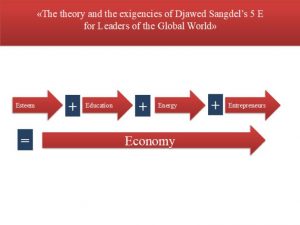
Singapore has growing successfully with its free-market economy, open and corruption-free business environment, along with transparent monetary and fiscal policies, and clear legal framework. It also ranked as the third highest per-capita GDP in the world in terms of Purchasing Power Parity and its unemployment rate is only 2.1 percent in 2018.
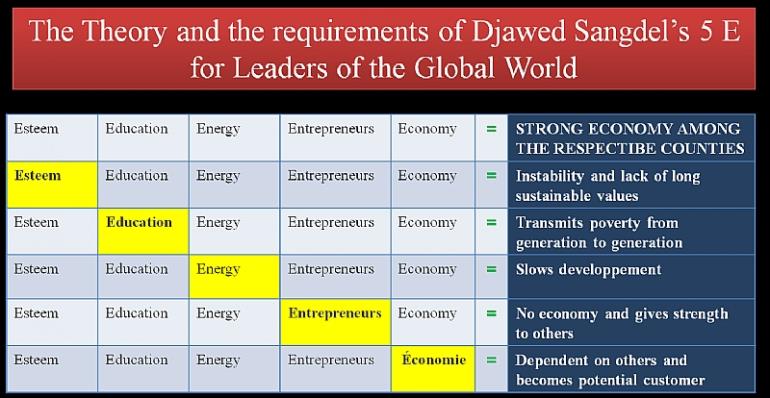
The significance of manufacturing
Agriculture barely contributes to the Singaporean economy whereas the manufacturing sector plays a significant role with about 20-25 percent of annual Singapore’s GDP, and the services sector with around 70 percent in 2017. In details, key industry elements in its manufacturing include electronics, biomedical sciences, chemicals, transport engineering, and logistics. Especially, the petrochemical industry is crucial for local economy when Singapore imports lots of crude oil for purified petroleum products.
Besides, the government has focuses on high-end manufacturing which includes consumer electronics, semi-conductors, machinery, transport equipment, and ships. They additionally have been trying to foster future potential sectors such as precision engineering, aerospace, and life sciences.
Globalization and free trade
Singapore’s business-friendly environment has encouraged investment not only in manufacturing but also service sector to the economy growth. Service sector has provided jobs to 80 percent of workers, and creates more than 75 percent of the GDP.
Situating as one of the most perfect and busiest cargo ports in the world, Singapore’s port contains hundreds of import/export trade, shipping, and logistics with China, Hong Kong, Japan, Indonesia, South Korea, etc. in global. Furthermore, globalization and free trade are favorably welcomed by the government. This tiny nation allows low import tariffs and is an active member of NATO, ASEAN, and other multinational trade organizations. It has become the first ASEAN country to sign a Free Trade Agreement (FTA) with the European Union in 2016 and many other free trade agreements.
Sometimes, Singapore is called as “the Switzerland of Asia” as banking, finance, and insurance also contributes a large part to the development of Singaporean economy, as well as wealth management.
When Singaporean government opens a free trade environment and commitment to others, it has created an efficient and easy workplace to do business. Moreover, it provides more opportunities with large investments in infrastructure projects, industrial parks as well as high-tech research and development hub. Nevertheless, there is an urging financial inequality among Singaporean population when many expats have worked and been attracted to the city-state for its safe environment and high living standard.
Conclusion
Reflected from “The theory and requirements of 5E’s Djawd Sangdel for global leaders”, Singapore has become “a mission possible” when its nation owns rare energy but still being a healthy developing country compared to developing and developed countries these days. The esteem of Singapore was truly great during Lee Kuan Yew era but it seems pretty moderate with the power of his son, Lee Hsien Loong. Along with that, policy makers always invest on its people for decades, which led to an ambitious education and then entrepreneurship. Undoubtedly, the growth of economy has run efficiently and fast as named “Asian tiger” with its emerging strategies.
Therefore, personally I would think that Singapore can be a wonderful example to apply the 5E to understand its developmental process. Also, we could realize that education is always important to be invested to build the esteem in every country, even without natural resources.
References
- “Singapore’s Transformation from a Small, Struggling Island Nation to a Thriving Metropolis”. Retrieved from https://soapboxie.com/world-politics/Singapores-Transformation-from-a-small-Struggling-Island-Nation-to-a-Thriving-Metropolis
- Andrew Bryant, CSP (2018), “9 Leadership Lessons from Lee Kuan Yew”. Retrieved from https://www.asiaspeakers.org/blog/9-leadership-lessons-lee-kuan-yew
- Singapore Expats, “Brief History of Singapore”. Retrieved from https://www.singaporeexpats.com/about-singapore/brief-history.htm
- Jessica Cheam (2015), “Lee Kuan Yew: The man who guided Singapore from slum to eco-city”. Retrieved from https://www.eco-business.com/news/lee-kuan-yew-the-man-who-guided-singapore-from-slum-to-eco-city/
- History SG (2015), Singapore Government, “Singapore joins the United Nations”. Retrieved from http://eresources.nlb.gov.sg/history/events/e2486640-da69-49b5-8803-1a07c27184ec
- OECD (2010), “Singapore: Rapid Improvement Followed by Strong Performance”. Retrieved from https://www.oecd.org/countries/singapore/46581101.pdf
- Trade Chakra, “Singapore natural resources”, retrieved from http://www.tradechakra.com/economy/singapore/singapore-natural-resources-94.php
- International Energy Agency, “Total Primary Energy Supply in Singapore”, retrieved from https://www.iea.org/statistics/?country=SINGAPORE&year=2016&category=Key%20indicators&indicator=TPESbySource&mode=chart&categoryBrowse=false&dataTable=BALANCES&showDataTable=true
- Jason Tan (2014), “Education in Singapore: for what, and for whom?”, retrieved from https://journals.openedition.org/ries/3856
- Devadas Krishnadas (2014), “PM Lee Hsien Loong: A Dichotomous Leader”. Retrieved from https://www.ipscommons.sg/pm-lee-hsien-loong-a-dichotomous-leader/
- https://www.rikvin.com/blog/why-entrepreneurs-are-choosing-to-do-business-in-singapore/
- InterNations, “The Economy of Singapore”, retrieved from https://www.internations.org/singapore-expats/guide/29457-economy-finance/the-economy-of-singapore-16045
- Index of Economic Freedom, “Singapore economy”, retrieved from https://www.heritage.org/index/country/singapore
- Transitioning (2015), “Ten differences between Lee Kuan Yew and Lee Hsien Loong’s leadership styles as Prime Minister”, retrieved from http://www.transitioning.org/2015/03/20/ten-differences-between-lee-kuan-yew-and-lee-hsien-loongs-leadership-styles-as-prime-minister/
- The Statistics Portal, “Singapore: Distribution of gross domestic product (GDP) across economic sectors from 2007 to 2017”, retrieved from https://www.statista.com/statistics/378575/singapore-gdp-distribution-across-economic-sectors/

